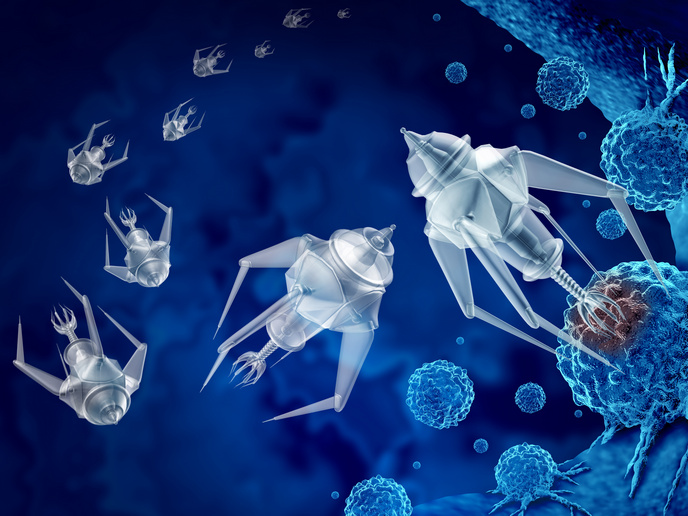Shaping the future of biomedicine with smart nanobot swarms
Can nanobots be made to move collectively like flocks of birds and schools of fish? Replicating the complexity of movement and cooperative behaviour found in systems in nature is no small feat, but the i-NANOSWARMS project has accepted the challenge. The project is developing smart enzyme-powered nanobot swarms capable of propelling themselves using biocompatible and bioavailable fuels, and also of cooperating, communicating and interacting between each other and with their environment. Since its launch in 2020, i-NANOSWARMS researchers have been working on how to engineer such complex swarm systems. They have been exploring how to make them move in 3D and how to use communication reactions to guide them to specific locations, as happens with a process called ‘chemotaxis’ in nature. “After this is achieved, practical applications in biomedicine can be envisioned,” states project lead Samuel Sánchez, an ICREA research professor hosted by the Institute for Bioengineering of Catalonia (IBEC), which is coordinating i-NANOSWARMS.
Key achievements
So far, the project team has successfully designed the collective motion of nanomotors that move in 3D, mimicking bioconvection. In terms of biomedical applications, swarms of nanobots are able to interact with complex media like mucus and synovial fluid – a thick liquid found between our joints – to improve the transport of small molecules. i-NANOSWARMS researchers also introduced the concept of stigmergy into their work. This is a mechanism through which ants and termites communicate by releasing chemical signals that are received by the ants and termites following them. “In this project we used ‘troops’ that work together, where the first troop modifies a complex medium of high viscosity and then a second troop follows this chemically-physically generated path to efficiently transport the active ingredient,” explains Sánchez. However, probably the most impactful work carried out within i-NANOSWARMS so far would be the research conducted using the swarming behaviour of urease-powered nanomotors for bladder cancer. The notable results attained in this area have made the project team a leader in the field. “For instance, we were the first ones to employ in vivo monitoring using medical imaging techniques on swarms of these nanobots,” observes the researcher. “Thereafter, we achieved impressive tumour reduction in bladder tumours in mice using radionuclide therapy and immunotherapy.” Next for i-NANOSWARMS (Cooperative Intelligence in Swarms of Enzyme-Nanobots) is to transition from the inorganic nanomotors used in their work until now to organic, degradable motors approved by the European Medicines Agency and the U.S. Food and Drug Administration. Additional research will be conducted on nanobot communication, involving cascade reactions to guide them, chemotaxis and other guiding strategies. The team will also look further into different in vivo imaging techniques. To date, another two European Research Council projects have emerged from i-NANOSWARMS: OrthoBots and MucOncoBots. The two new Proof of Concept Grants are also coordinated by IBEC. If you are interested in having your EU-funded project featured as a ‘Project of the Month’, please send us an email to editorial@cordis.europa.eu and tell us why!



